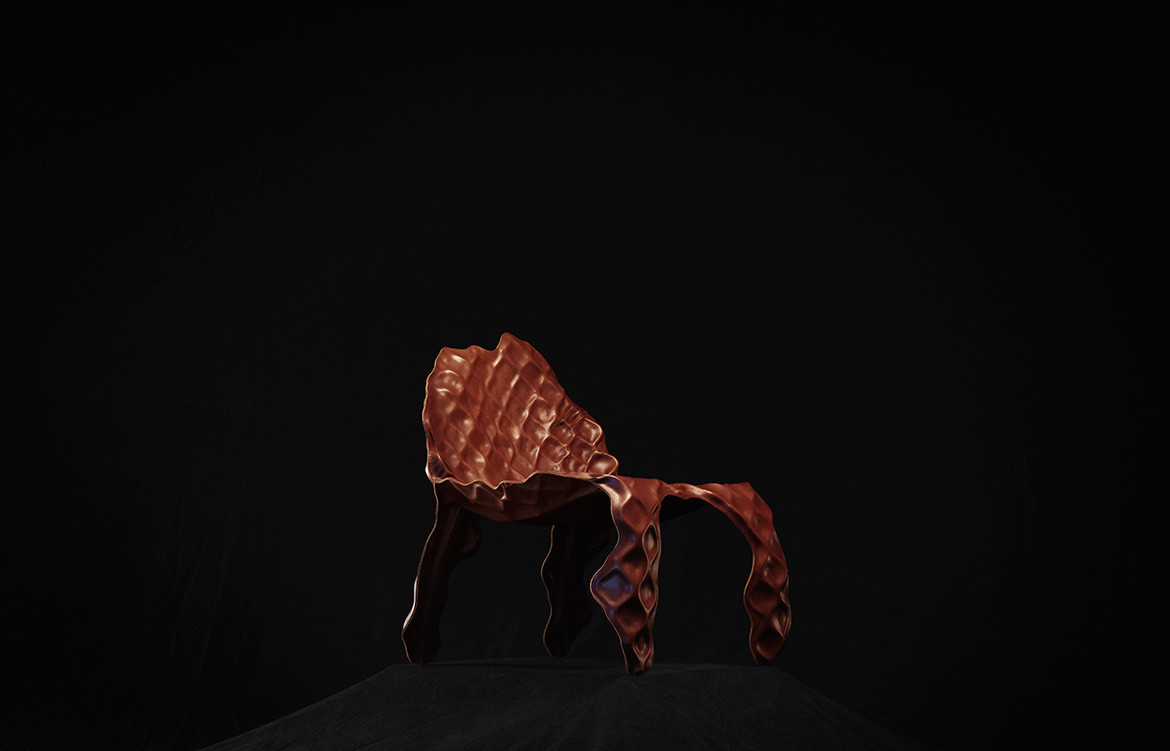Johnny Nargoodah and Trent Jansen first met in 2016 when Trent went to Johnny’s hometown, Fitzroy Crossing, as part of the In Cahoots project by Fremantle Art Centre. Working with fellow Mangkaja artist, Rita Minga, the group designed an armchair from their interpretation of local mythical creature. The piece is called Jangarra (2017) and now sits as part of the National Gallery of Victoria’s permanent collection alongside Collision Collection (2017) – a piece created through experimentation with leather panels and old car panels found locally.
It’s the latter object of design that inspired their latest joint venture, Partu (Skin) that is currently on exhibition at Gallery Sally Dan-Cuthbert in Sydney from 11 June-5 July 2020. Partu is the Walmajarri word for skin and Johnny is a Nyikina man who has spent much of his life working with leather as a saddler on remote cattle stations. Trent is a research-based object designer, or a design anthropologist, based on the south coast of New South Wales who has frequently worked with leather and pelts in previous work.
The body of work that comprises Partu has been designed by Johnny and Trent who each bring different – yet open and accepting – lenses to the other’s design background.

For Trent, Partu challenges Material Culture Theory that understands human-made artefacts to be an embodiment of that person’s culture (values, ideas, assumptions). Partu however is human-made artefacts created by two people of different cultures – do they then reflect the values of both cultures?
For Johnny, the project represents a few key ideas, the first being the notion of making. Partu is the manufacture of functional pieces of furniture such as chairs and cabinets that look good and work well. The work also explores the ability to recycle materials such as old frames and materials otherwise discarded as rubbish that can be restored and dressed up with leather. The leather also gives a sense of history to the furniture, evoking Fitzroy Crossing and life on a cattle station. Equally leather offers a sensory aspect: the smell of leather sparking memories and evoking a strong sensory response.

Unlike their previous work together, Partu was designed exploring new methods of collaborative design with equal co-authorship. One such method was Sketch Exchange – a process by which the two designers send a single sketch back and forth allowing the idea to evolve with equal input. Another method explored was Design By Making, this involved working with materials at full scale – effectively designing the piece as it is being physically made. Both collaborators work together as they carve, construct, manipulate and join multiple materials to make a single whole.
Saddle (2020) is an example of a piece made from Sketch Exchange while Ngumu Jangka Warnti (2020) (the Walmajarri phrase for ‘whole lot from rubbish’) was designed by Trent and Johnny as they made them.
Partu (Skin) will be on exhibition at Gallery Sally Dan-Cuthbert from 11 June 2020 to 5 July 2020.
Trent Jansen
trentjansen.com
Gallery Sally Dan-Cuthbert
gallerysallydancuthbert.com
Photography by Romello Pereira
Johnny Nargoodah and Trent Jansen are represented by Gallery Sally Dan-Cuthbert. The creation of this body of work was funded by the Australia Council for the Arts, the National Gallery of Victoria via Melbourne Design Week, UNSW Art & Design, the Western Australian Department of Local Government, Sport and Cultural Industries and Mangkaja Arts Resource Agency.
We think you might also like this profile on Trent Jansen.
Saddle (2020)




Ngumu Jangka Warnti (2020)






